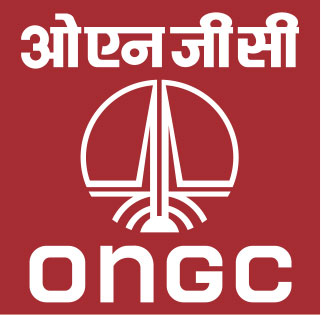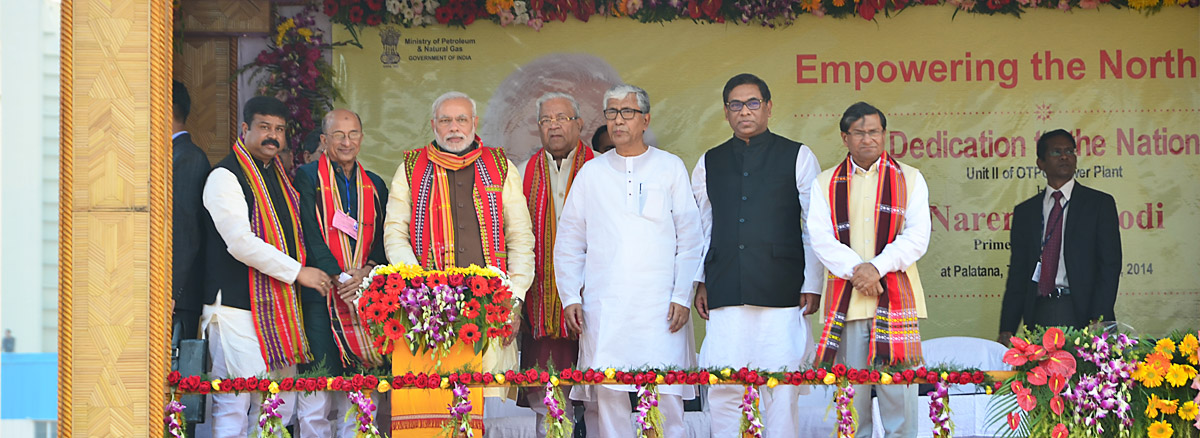
Sustainability in ONGC
Sustainable Development is the overarching working template in ONGC which finds expression in its commitment to continually enhance the triple bottom line benchmarks of economic, environmental and social performance. In ONGC, the business exists for the welfare of its multi-level stakeholders. Consistent dialogue and engagement with all stakeholders at every stage of our value chain had a critical role in creating long-term sustainability and delivering sustainable growth story of the company. The sustainability journey in ONGC was focussed on balancing the social, environmental and economic risks and opportunities prior to the implementation of any project activities. From the beginning the company followed the recommendations from the Assessment Reports of Inter-Governmental Panel on Climate Change (IPCC). Climate Change mitigation and adaptation being the ideal route for combating climate change, the company has pioneered several initiatives successfully in both these fronts. Creation of mass awareness, transparent policies and organisational support have made sustainability converging to be an integral part of our business process.
Policies & Manuals
Business sustainability requires firms to adhere to the principles of sustainable development. According to the World Council for Economic Development (WCED), sustainable development is development that “meets the needs of the present without compromising the ability of future generations to meet their own needs.” It stresses the importance of taking a broader view of what human welfare entails, of using a long-term perspective about the consequences of today's activities, and of recognising the global nature of many of the most pressing challenges facing societies. So , for industrial development to be sustainable, it must address important issues at the macro level, such as: economic efficiency (innovation, prosperity, productivity), social equity (poverty, community, health and wellness, human rights) and environmental accountability (climate change, land use, biodiversity). Being a responsible Public Sector Enterprise, the company adheres to all applicable Rules, Regulations and Acts of the country while conducting its business. All critical activities such as procurement, payment, tendering, contracting, human resources, finance and other functions are governed through separate Manuals available for reference to all concerned. Moreover, adequate policies are formulated, implemented and monitored for prudent and transparent utilisation of the limited resources.
All policies have been formulated after wide consultation and discussion amongst the relevant stakeholders and further the same gets reviewed from time-to-time to cater to emerging and new business realities/ paradigms, after wider consultations amongst stakeholders. The Company being a Public Sector Enterprise pursues policies laid down by the Government of India and other statutory bodies. All policies as mandated by statutory / regulatory bodies are followed by the Company. The Company follows the international standards, practices and standard operating procedures as followed by other E&P companies across the world. Besides, the Company being a national oil Company adheres to all the statutes and policies of the Government of India and other statutory bodies such as DGH and OISD. All internal policies, conforming to the directives of the Government, are approved by the Board or authority delegated for the same by the Board and the Board oversees the compliance and implementation of the policies through its various Committees. The major policies of the company can be seen here.
Greenhouse Gas (GHG) Accounting and Abatement
The challenges from Climate Change has emerged as key sustainability concern for policy makers around the world and industries across the globe responded to this challenge by adopting policies and programs that leads to GHG emission reductions in their operations and value chains. The oil and gas sector is one of the largest man-made emission sources of methane, alongside agriculture and waste. It produces about one quarter of global anthropogenic methane emissions. Hydrocarbon industry is energy and emission intensive. As the reservoirs get depleted, recovery of hydrocarbons become more difficult and energy intensive. In spite of the rapid deployments and developments in clean energy technologies, oil and gas continues to be the major source of primary energy for India, for the present as well as near future.
In the above context, ONGC has been proactive in initiating actions for reducing its emissions. Policies and programs were rolled out long back for combating climate change. Based on the belief “that cannot be measured, cannot be managed” the first GHG accounting was conducted in the year 2010-11, through external consultant, setting the context and future roadmap for emission reductions. ONGC has undertaken some of the land mark initiatives in emission mitigation by utilising with the latest technologies. Tank Vapour Recovery Units, Flare Gas Recovery Units, Waste Heat Recovery units, Energy Efficient motors, Retrofitting Equipment for Energy Efficiency, Reduction in Gas Flaring, LED lighting systems, Replacing Natural Gas with compressed air for instrumentation purpose, Casing Head gas recovery in SRP units, Replacement of old hydrocarbon pipelines, Fuel Switching, Paperless office, Green Buildings, Replacement of Diesel Gensets with Gas Generator sets, Micro turbines, Dynamic Gas Blending, Renewable Energy, ONGC Tripura Power Company, Green buildings, etc are all examples of multitudes of initiatives rolled out by ONGC for combating global warming and climate change. The company continue to explore new opportunities and infuse latest technologies in its value chain.
Oil and Natural Gas Corporation Limited (ONGC), is one of the world’s largest integrated oil and gas Exploration and Production (E&P) companies and largest in India. It’s exploratory & production activities spread across more than 400 operational establishments’ on-land and in the high seas. You would be delighted to know that, through these aggressive efforts ONGC has been able to limit its emission to about 10 Million Metric Tons of CO2 equivalent for the past few years (for more details, please refer Sustainability Reports). Unlike in the early stages, emission reduction is now a decentralised and local action in ONGC, with every work centre or installation identifying opportunities and taking feasible actions for mitigation. Responsible use of natural resources and responsible production of hydrocarbons – without accidents, spills and emissions in line with the UN theme remains the working principle in ONGC.
Carbon Capture, Storage and Use (CCSU) is another priority area identified for large scale emission reductions. ONGC is contemplating on taking up CO2 sequestration project in a big way and entered in to an MOU with IOC to use CO2 emitted from their Jhonore thermal power Plant (Gujarat) and use it for Enhanced Oil Recovery through CO2 flooding in Gandhar oil and gas field of ONGC situated 120 KM away from Jhanore plant, in Gujarat. Presently a techno-commercial feasibility study is in progress to identify the best technology and financial implications.
Mission Carbon Neutral - An Initiative
Global Methane Initiative
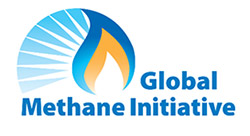
Methane is the second most abundant anthropogenic Greenhouse Gas (GHG) after carbon dioxide (CO2), accounting for about 20 percent of global emissions. it has a relatively short lifespan in the atmosphere of approximately 12 years.
Though methane is in the atmosphere for a shorter period of time and is emitted in smaller quantities than CO2, its Global Warming Potential (i.e., the ability of the gas to trap heat in the atmosphere) is 28-34 times greater. As a result, methane emissions contributed to about one-third of today’s anthropogenic GHG warming.
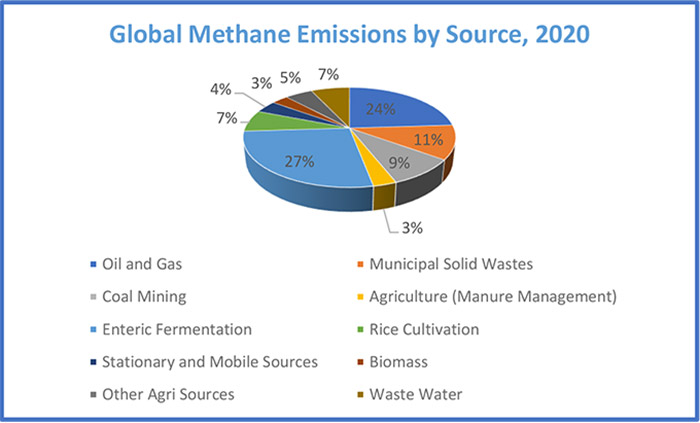
Global anthropogenic methane emissions by 2020 are estimated to be 9,390 Million Metric Tons of CO2 equivalent (MMTCO2E). About 24% of these emissions will come from the oil and natural gas systems.
The Global Methane Initiative (GMI) is a voluntary, international partnership that brings together national governments, private sector entities, development banks, NGOs and other interested stakeholders in a collaborative effort to reduce methane gas emissions and advance methane recovery and use as a clean energy source.
The partnership initiative known as GMI, began as the "Methane to Markets Partnership" launched during the George W. Bush Administration on 16 November 2004, 14 Partner countries signed the original Terms of Reference document. U.S. pledged US$53 million over an initial five-year period.
The partnership assumed a new name-the Global Methane Initiative (GMI) -- under the Obama Administration, on 1 October 2010, 37 Partner countries and the European Commission launched the Global Methane Initiative (GMI) to urge stronger international action to fight climate change while developing clean energy and stronger economies. The U.S. pledged an additional US$50 million to support GMI and the scope of GMI activities has since expanded into other sectors(agriculture, coal mines, municipal solid waste, municipal wastewater, and oil and gas systems).
GMI's Steering Committee guides the work and activities of the partnership on a broad level. The Steering Committee is supported by the Secretariat-also known as the Administrative Support Group (ASG), which is housed at the United States Environmental Protection Agency (US-EPA).
Working under the Global Methane Initiative (GMI), the Natural Gas STAR International Program is a voluntary partnership between the oil and natural gas industry and the United States Environmental Protection Agency (US-EPA) that promotes use of cost-effective technologies and practices to reduce methane emissions.
ONGC was the first non-American oil company to enter in to a collaboration with US-EPA, under the Natural Gas STAR Program in the year 2007. In 2008 and 2009, the Oil and Natural Gas Corporation Ltd (ONGC) of India, the first Natural Gas STAR International Partner, undertook a desktop review and in-country methane emissions measurement study and analysis to identify and quantify baseline methane emissions levels for seven of its production, processing and transmission facilities.
The company has later procured high tech equipment (infrared camera, turbine metres, vent bags, etc.) required for carrying out fugitive emission detection survey and imparted training and skill sets to a dedicated GMI team, in association with the US-EPA. Now leak surveys are regularly conducted by the GMI team, at selected process installations in our work centres.
Through this programme alone, the company could so far prevent approximately 20.48 MMSCM of methane gas leakages in to the atmosphere with an environmental benefit of approximately 306,250-Ton CO2 Equivalent (TCO2e) up to the FY’19. During the year fugitive emission surveys were conducted at Uran Plant, Hazira Plant and 08 production installations of Ahmedabad Asset.
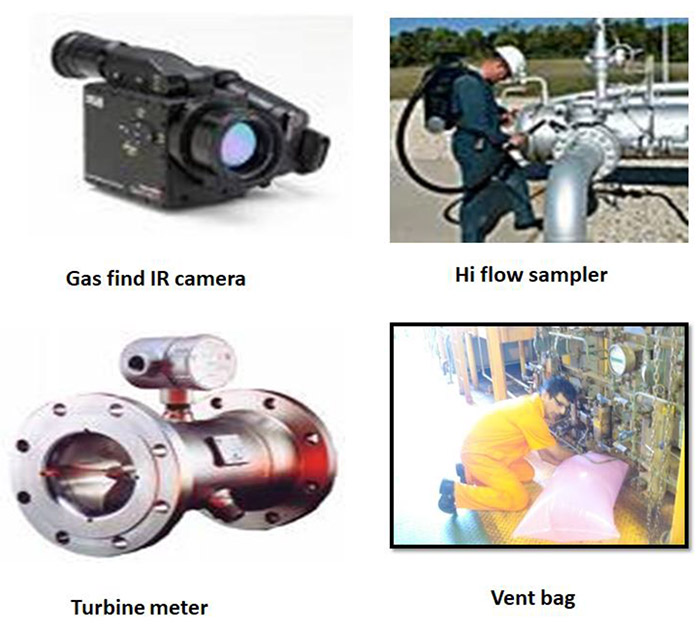
The measurement study was conducted using GasFindIR infrared camera technology to identify emission sources; and a combination of turbine meters, Hi-Flow samplers, and bagging techniques are used to measure their emission rates.
U.S. EPA estimates that by 2020, reductions of more than 1,500 MMtCO2e can be achieved at low cost. Methane is also an important tropospheric ozone precursor. Studies have shown that reducing global methane emissions by 20% could avoid more than 300,000 ozone-related mortalities globally in 2030. Reducing methane anywhere in the world helps air quality everywhere.
Sustainability Reporting
ONGC took a monumental leap, in the year 2009-10, when it commenced communicating its triple bottom-line performance through its corporate Sustainability Report. The scope of reporting was extended to the subsidiaries ONGC Videsh and MRPL from the year 2013-14 and further to OMPL, OPaL and OTPC from the year 2016-17 and ONGC Group Corporate Sustainability report is being launched every year. The reports are made in accordance with GRI standard and are assured by independent licenced assurers in accordance with AA 1000 AS (2008) protocol.
ONGC reports true figures and shares all relevant information openly to the key stakeholders group viz. shareholders, local communities, Investors, customers, partners, governments, non- governmental organizations, employees, media, academics, contractors and suppliers which gives a clear picture of our business performance and at the same time addresses the material issues of key stakeholders. ONGCs honest reporting has built strong trust among various stakeholder group and on the other hand has motivated ONGCians to strive more for a better environmental and social performance along with improved business performance.
Taking clue from the rising interest of Environmental, Social and Governance (ESG) disclosures and rating of the corporates, from FY’20 onwards ONGC Group of Companies would be launching its GRI based Environmental, Social and Governance (ESG) Report along with traditional Sustainability Report, and the same would be launched soon.
Clean Development Mechanism
One of the measure taken by ONGC to reduce its carbon footprint is Clean Development Mechanism (CDM). Under this mechanism, emission-reduction projects in developing countries can earn Certified Emission Reduction (CER) credits. ONGC is among the first few PSU in the country to have taken a lead in the area of Clean Development Mechanism. The Company commenced its Clean Development Mechanism (CDM) journey in 2006 and has so far registered 15 CDM projects with the United Nations Framework Convention on Climate Change (UNFCCC) under the Kyoto protocol, demonstrating its commitment towards protection of our environment and sustainable development. We registered one of the largest CDM project-ONGC Tripura Power Company- with an emission reduction potential of approximately 16 lakh ton CO2e per annum. We continue to register new projects and verify & renew existing projects for accrual of CERs. As on date we have a total of 22,05,022 Certified Emission Reductions (CERs) in our CDM account. Three new projects are also under validation process, for registration as CDM projects.
| Sl.No. | Name of the Project | Reference Number | Emission Reduction Potential (CERs) |
|---|---|---|---|
| 1 | Waste heat recovery from Process Gas Compressors (PGCs), Mumbai high south (offshore platform) and using the recovered heat to heat process heating oil. | 0814 | 5320 |
| 2 | Up-gradation of Gas Turbine 1 (GT 1) and Gas Turbine 2 (GT 2) at co-generation plant of Hazira Gas Processing Complex (HGPC) of Oil and Natural Gas Corporation Limited (ONGC) | 0847 | 7802 |
| 3 | Flare gas recovery project at Uran plant, Oil and Natural Gas Corporation (ONGC) Limited | 1220 | 97740 |
| 4 | Flare gas recovery project at Hazira Gas Processing Complex (HGPC), Hazira plant, Oil and Natural Gas Corporation (ONGC) Limited | 1354 | 8793 |
| 5 | Amine Circulation Pumps Energy Efficiency at Hazira works of ONGC | 2648 | 4043 |
| 6 | 51 MW wind power project of ONGC at Surajbari, Gujarat in India | 2856 | 85762 |
| 7 | Energy Efficient Green Building at Mumbai by ONGC Limited | 7578 | 544 |
| 8 | Green Building at Dehradun | 7634 | 735 |
| 9 | Gas Flaring Reduction at Neelam & Heera Asset | 8286 | 65811 |
| 10 | Natural gas based combined cycle power plant in Tripura, India | 6888 | 1612506 |
| 11 | Green Building at Kolkata | 7985 | 1881 |
| 12 | Energy Efficient Green Building at New Delhi by ONGC Ltd. | 6519 | 5944 |
| 13 | Gas Flaring Reduction Project at GGS, Chariali, Sibasagar, ONGC, Assam | 10108 | 15172 |
| 14 | Replacement of Main Oil Line (MOL) Pumps at Neelam & Heera Asset of ONGC | 10302 | 10539 |
| 15 | 102 MW Wind Power Project, ONGC, Rajasthan, India | 10240 | 180177 |
Renewable Energy
Use of renewable energy is not a new concept to ONGC as it started using solar panels several decades ago in some of its offshore installations. However, in the last two decades, ONGC has become increasingly active in the renewable energy sector and made substantial investments in renewable energy projects. Our first wind power project of 51MW capacity was installed in the state of Gujrat (Bhuj district) in 2008 at a project cost of ₹ 309.58 crores. The second of wind power project at Jaishalmer, Rajasthan was successfully commissioned on 5th September 2015 at a project cost of ₹ 562.02 crores. Solar power plants are also installed at work centres depending on the availability of open spaces and rooftops. So far an aggregate of about 25 MWp capacity plants are installed across different work centres and at many places, projects are under different stages of implementation. The total installed capacity of renewable energy is 178 MW as on 31.03.2020.
Sustainable Water Management
Water is life. Growing pressure on water resources – from population and economic growth, climate change, pollution, and other challenges – has major impacts on our social, economic, and environmental well-being. Many of our most important aquifers are being over-pumped, causing widespread declines in groundwater levels. For sustainable use of fresh water and conservation of this precious natural resource, ONGC has rolled out Rainwater harvesting policy in 2009 and Sustainable Water Management policy in 2011. ONGC has adopted a 4-R principle (Reduce-Reuse-Recycle-Recharge) in its water management philosophy. Water footprint studies are conducted at work centres to understand and quantify the use of fresh water and its discharge patterns. Based on the outcomes of the water footprint study, Different types of water management projects like rain water harvesting projects, sewage treatment plants, re-use of produced water, etc. are taken up for implementation.
The large rainwater harvesting project at the Institute of Petroleum Safety, Health and Environment Management (IPSHEM), Goa harvests the run- off water from the large institute campus in a 1000 M3 capacity ground tank and utilizes the harvested water for its various utilities and for conducting training programmes on fire fighting. Uran plant of ONGC will be setting up a 10,000 M3/day capacity Seawater Desalination Plant, scalable to 20,000 M3/day capacity, which will eliminate the total fresh water requirement of the plant, in couple of years from now. With this project alone, ONGC’s water footprint would be reduced initially by 16% and up-to 32% with the scaling up of capacity of the plant.
Paperless Office Project
In line with the Digital India Campaign of Government of India, the Paper Less Office (PLO) initiative of ONGC launched by Hon’ble Prime Minister Shri Narendra Modi on 25.09.2017 was a Giant Leap from the standalone Office Automations to a digital transformation of the organisation. The project code named DISHA (Digitization, Integration and Standardization by Harnessing Automation) transformed the entire work centres to digital processing of their files making seamless electronic transfer across different users and various work centres of ONGC at the click of a mouse, saving a lot of time; space; money spent on ink, cartridges, printer and paper while setting a new standard in efficiency, accountability and transparency.
A paperless office, also called a paper-free office, is a work environment which uses minimal physical paper and instead uses primarily digital documents. A paperless employee is a worker who has eliminated or greatly reduced the use of paper in the workplace.
The concept of paperless office (PLO) is not new for ONGC. The company’s business processes had been IT enabled with massive use of information Technology for internal mailing systems, intranets, various internal portals for communication and employee interactions, SAP enabled business processes including HR functions, Performance Appraisal, ERP, e-tendering, etc. But the use of physical files for various approvals, sanctions, procurements, were still in progress across the 400 plus operational establishments’ on-land and in the high seas across the nation.
Manufacturing paper products produce greenhouse gases, causing deforestation and global warming. Recycling can offset some of the environmental impact, but not by much. Most paper eventually ends up in a landfill. Further, ink and toners contain volatile compounds and non-renewable substances which are damaging to the environment. The Paperless Office initiative of ONGC alone will save about 12,000 trees from cutting down from our land and mitigating approximately 1000 ton CO2e emissions every year.
SDG Mapping

The SDGs are a globally agreed sustainable development framework consisting of 17 goals and 169 targets to be achieved by 2030. As a global call to action for positive change, the goals were adopted by all 193 members of the United Nations in 2015 Paris agreement. While the Governments are responsible for prioritising and implementing approaches that meet the SDGs within the time limits, these goals cannot be achieved without the active participation by the industry, businesses and society at large.
ONGC being a responsible Public Sector Enterprise is working hand in hand with the government and its various missions to meet these goals. While the goals have linkages and interconnections, we contribute to most of the 17 goals. The major contributions of ONGC are tabulated below:
| SDG No. & Description | Contributions |
|---|---|
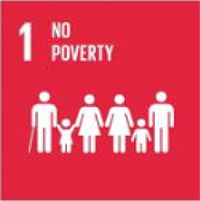 |
ONGC has undertaken skill development initiative in multiple trades across industries like training in organic farming, plastic processing, hydrocarbon sector skills, industrial security guard, retail sales and hospitality, tailoring, beauty parlour, welding, tally, repair of electronic items, nursing, fire-fighting, DTP training, Plumbing, Site Accountant, Masonry, solar training, CCTV and Mobile repair etc., spanning various regions across the country. 4895 youth were trained in various skills in FY 2019-20 out of which 2014 were provided with opportunity for gainful employment. ONGC has spent Rs. 44.27 cr. towards skill development initiatives in FY 2019-20. Skill Development Institute at Ahmedabad has been started as part of Petroleum Sector Skill Initiative. In year 2019-20, 476 youth were trained in 9 different trades and 356 are gainfully employed. |
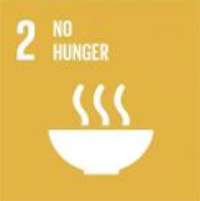 |
Rs.11.73 Cr. was spent towards initiatives for reducing hunger by providing mid-day meals to school going children and by strengthening infant nutrition in rural areas through construction of Anganwadis. In 20 Aspirational Districts adopted by ONGC, 461 Anganwadis were constructed, LPG connections provided to 600 Anganwadis and 280 Anganwadis have been provided essential equipment. These Anganwadis have been customized to cater to up to 100 students and has been aesthetically designed to attract children and has been conceptualized in line with play school in urban areas. This helps in increasing attendance of children in Anganwadis and in-turn improve nutrition of these children. Mid-day meal is also being provided to around 30000 children in Surat, Jaisalmer, Baran and Daman. These efforts of ONGC are contributing towards eradicating hunger from the Society. |
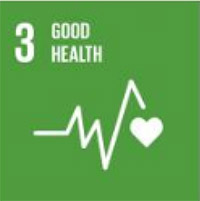 |
Healthcare has been one of the major thematic areas underlying ONGC’s CSR efforts. In our operational areas, access to healthcare is still a challenge in many villages, with residents having to travel very long distances for healthcare facilities. Therefore, several CSR initiatives have been undertaken towards development of healthcare in ONGC’s operational areas. In the area of healthcare, projects worth Rs. 253.07 cr. Have been developed. In FY 2019-20, an expenditure of Rs.114.20 crore has been incurred with respect to healthcare like construction of hospitals, providing medical equipment, ambulances, Mobile Medical Units and conducting medical camps -forming 19 % of the CSR expenditure this financial year. |
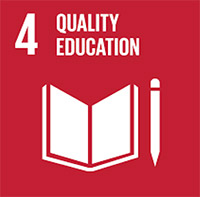 |
In FY 2019-20, Projects worth Rs 156.25Cr has been undertaken towards promotion of education across the country. ONGC has undertaken a wide range of initiatives towards promotion of education by strengthening educational infrastructure in the country through construction of Classrooms, creating drinking water facilities for school students and construction of school toilets which has led to positive enrolment and attendance outcomes. In its endeavour to enhance access to quality education, smart classrooms have been set up in schools across the country, thus making digital education in these areas a reality. In the North Eastern state of Arunachal Pradesh, ONGC has undertaken project for construction of B.Ed. College, Nirjuli at a cost of Rs. 5.9 cr. This college will contribute immensely towards improving quality of education in the region by producing 500 well trained teachers annually. Besides B.Ed., other advance training courses will be conducted in the field of education. More than 500 youth will be benefited every year and more than 90% of the beneficiaries will be from the ST community. In line with directives of Niti Ayog, ONGC has given special priority for development of Aspirational districts. 20 Aspirational districts have been identified by the company for undertaking CSR projects across the country. One of the thematic areas for year 2019-20 was school education. As part of this initiative in Aspirational Districts, digital education has been provided in 210 schools, innovative learning systems have been introduced in 50 schools, mini science labs have been constructed in 45 schools to foster scientific thinking, computer labs have been constructed in 4 schools. Apart from the above, classrooms have been constructed in 58 schools and toilets in 278 schools. |
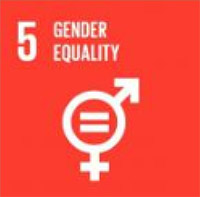 |
In the year 2019-2020, Rs.5.47 Cr has been spent towards the various projects specifically for the women empowerment. ONGC supported the project of Women Skilling & Entrepreneurship Development through Khadi Solar Charkha Training cum Production & Training Centres in Nawada and Sheikpura Districts of Bihar. The Training cum Production Centre (TPC) which runs on the solar power is aimed to promote traditional textiles. This initiative is one of its kinds in India and has become a centre for upcoming “Solar Charkha Mission”. The initiative has created 1180 women entrepreneurs in Khanwan Village till date who own Solar Charkhas installed at their households. |
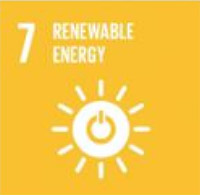 |
Use of renewable energy is not a new concept to ONGC as it started using solar panels several decades ago in some of its offshore installations. However, in the last two decades, ONGC has become increasingly active in renewable energy sector and made substantial investments in renewable energy projects. Our first wind power project of 51MW capacity was installed in the state of Gujrat (Bhuj district) in 2008 at a project cost of ₹ 309.58 crores. The second of wind power project at Jaishalmer, Rajasthan was successfully commissioned on 5th September 2015 at a project cost of ₹ 562.02 crores. Solar power plants are also installed at work centres depending the availability of open spaces and rooftops. So far an aggregate of about 25 MWp capacity plants are installed across different work centres and at many places, projects are under different stages of implementation. The total installed capacity of renewable energy is 178 MW as on 31.03.2020 |
 |
Decent Work and Economic Growth: Creating job opportunities is the key to prosperities. More than 30105 energy warriors are regular employees of ONGC drawing excellent salaries and other welfare measures like medical, housing, transport and superannuation facilities. The company also employs 25027 contractual and 599 tenure based workers as on 31.03.2020. Major OMCs of the country and GAIL are our main customers in the downstream who further process our products and make them available to consumers. The Company has always encouraged local suppliers to participate in its tendering process and also promote them through vendor development programs. Our continued pursuit in this direction has seen improved participation of small local players and socio-economic development of communities in and around operational locations. In general minimum 25% of the requirement has been reserved for eligible MSEs in tenders. Procurement of Rs 2329.85 crores was carried out from MSE Vendors during the year 2019-20 (which is 30.40 % of annual procurement plan as per Public Procurement Policy for MSEs). |
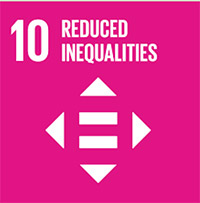 |
ONGC is operating a scholarship scheme for the benefit of SC/ST students since 1986-87. The merit scholarship is meant for students pursuing courses like MBBS, Engineering, MBA and masters in Geosciences. During year 2019-20, 1841 students belonging to SC/ST community have been benefitted. In the North Eastern state of Arunachal Pradesh which is a predominantly Scheduled Tribe region, 10 community halls were constructed which have served as centres for socio-economic activity in the region. For the welfare and safety of fisherman community along the coastal regions of Mumbai, ONGC has provided 1250 life jackets. Apart from this, 624 fishermen youth have been benefitted through skill development centres set up in Palghar, Maharashtra. They have been imparted training in areas like Medical and Nursing, Industrial Security Guard, Industrial sewing, and in repair and maintenance of electronic equipment. This has helped in reducing inequality by bridging skill gap. |
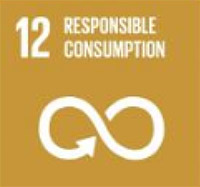 |
Responsible Consumption and Production has been the central theme of sustainability in ONGC. ONGC being mandated by the government for exploration and production of hydrocarbons is left with no option but to limit our energy consumption and emissions while pursuing for energy security of the country. We have created a host of measures to this extent where by the scope 1 & 2 emissions are almost flat in the preceding years. Various measures are taken at work place levels to minimise the consumption of resources, prevent accidents, spills and emissions while producing the hydrocarbons. Uran plant of ONGC will be setting up a 10,000 M3/day capacity Seawater Desalination Plant, scalable to 20,000 M3/day capacity, which will eliminate the total fresh water requirement of the plant, in couple of years from now. With this project alone, ONGC’s water footprint would be reduced initially by 16% and up-to 32% with the scaling up of capacity of the plant. |
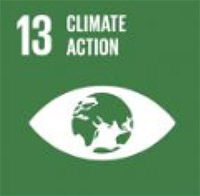 |
GHG Accounting: The first step in climate action is measurement of negative impacts if any. For this purpose the Greenhouse Gas Accounting is conducted every year and the total emissions (including scope-1 and scope-2 emissions) during FY’19 = 10.71 MMT CO2e with an almost flat trend for the last three years. Clean Development Mechanism (CDM): ONGC followed Kyoto protocol from the very beginning and so far registered 15 CDM projects with UNFCCC. We continue to register new projects and verify and renew existing projects for accrual of CERs. As on date we have a total of 22,05,022 Certified Emission Reductions (CERs) in our CDM account and 03 new projects are under validation process for registration as CDM projects. Signatory to Global Methane Initiative: During the year Fugitive emission surveys were conducted at all facilities of Uran & Hazira Plants and 08 production installations of Ahmedabad Asset. Through this programme alone, the company could so far prevent approximately 20.48 MMSCM of methane gas leakages in to the atmosphere with an environmental benefit of approximately 3,06,250 ton CO2 Equivalent (TCO2e) up to FY’19. LED lighting program: During FY’20 about 73,000 conventional lights were replaced with LED lights in various work places of ONGC, making the total to around 2,80,000 LED lights so far under our LED lighting program.This has enabled ONGC to save around 57 million electricity units annually, which realizes into realizing into a monetary annual savings of Rs. 36.5 crores while effectively reducing greenhouse gas emissions. Induction of new technologies: New technologies like Micro Turbines were installed at Linch GGS in Mehsana (65 KW capacity) and GGS-1 (Geleki) of Assam Asset for captive power generation. Apart from providing continuous power supply in remote areas, the method also reduces flaring of low pressure natural gas produced in these installations. Dynamic Gas Blending (DGB) in large Caterpillar Diesel Engines: Dynamic Gas Blending system was commissioned in three Drilling Rigs (Ankleshwar E-1400-7 & E1400-3, EV-2000-2) of Ankleshwar Asset and in final stage of implementation at EV-2000-3 Rig, Assam Asset. Around 45% reduction in HSD consumption is recorded, with major reductions in stack emissions. Jorhat Asset is planning to implement DGB system in two out of its three drilling rigs; the method is also considered to be a part of future purchase specifications for all drilling rigs. |
